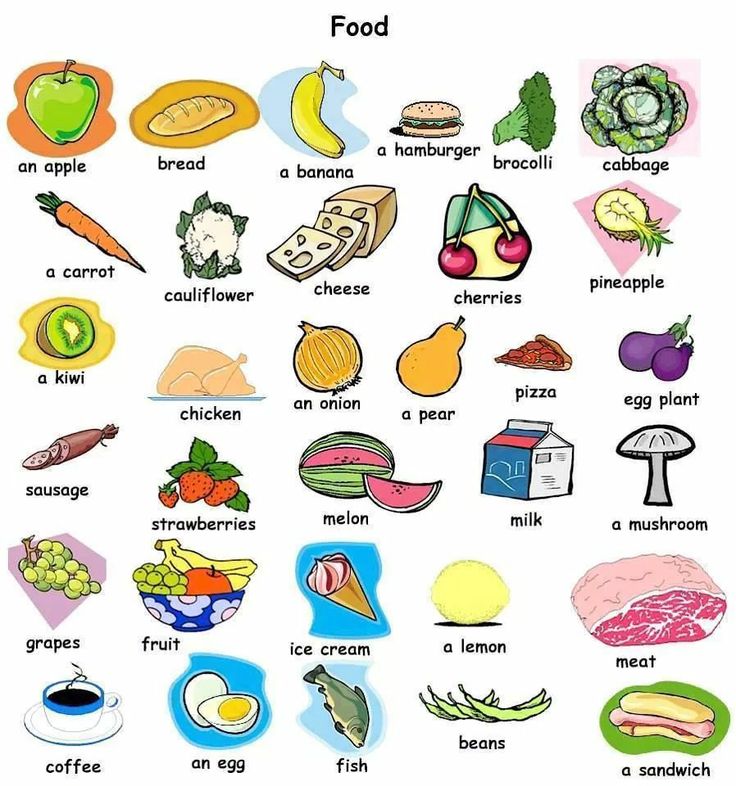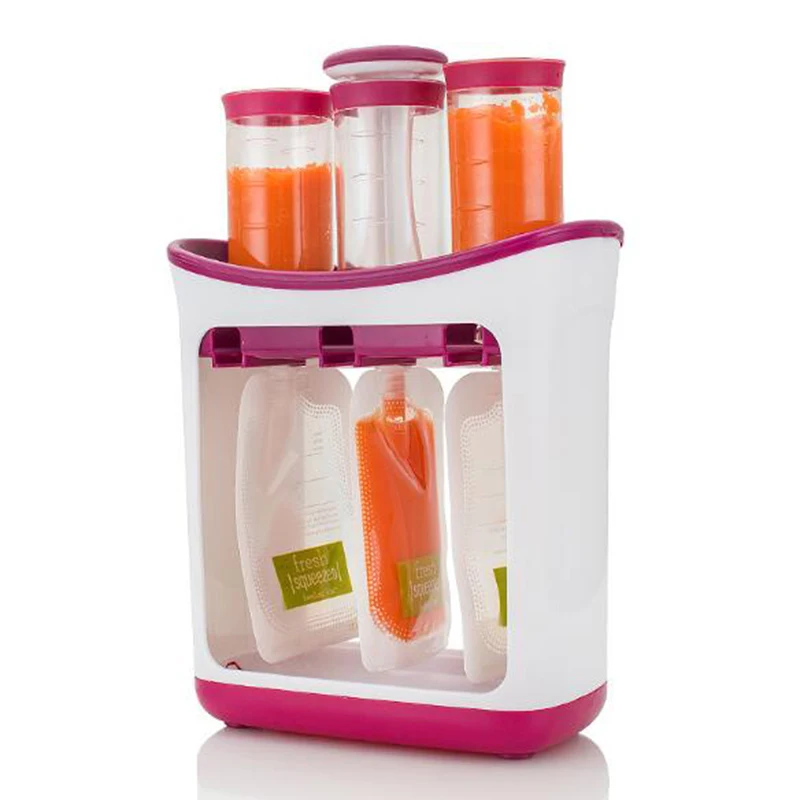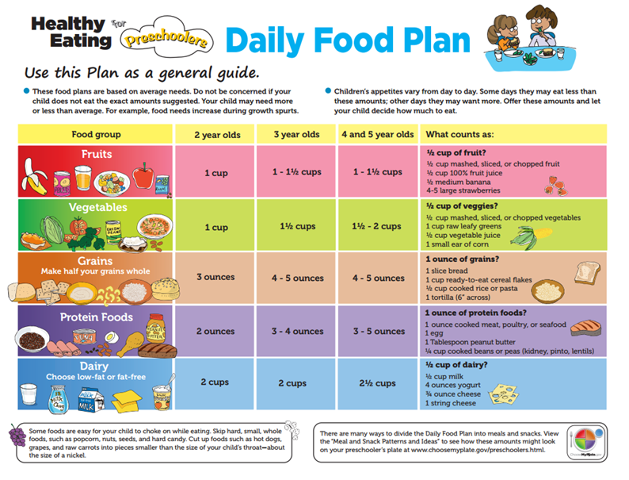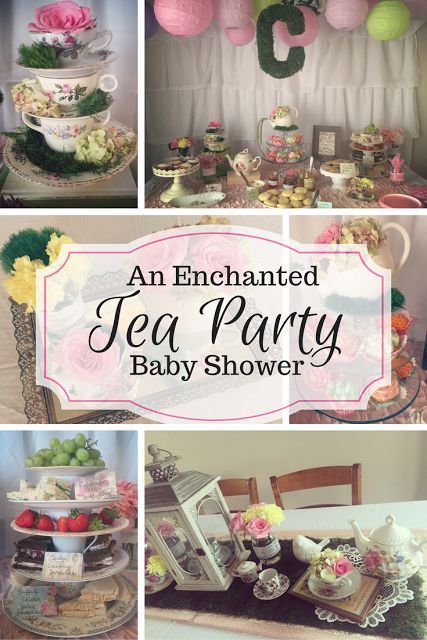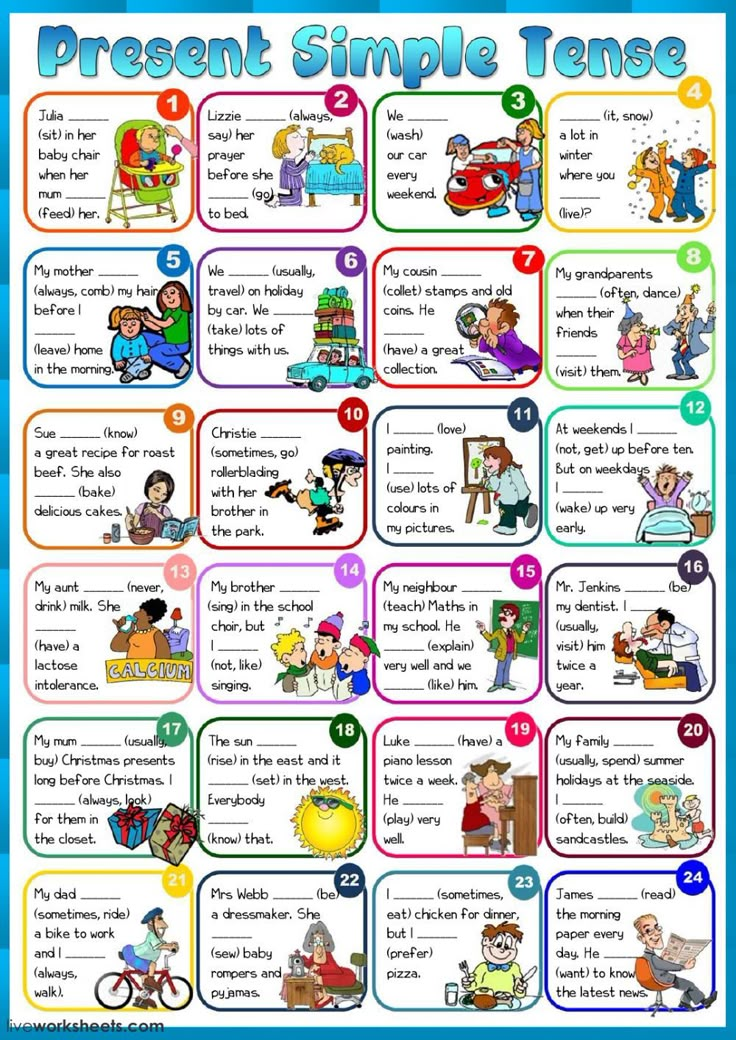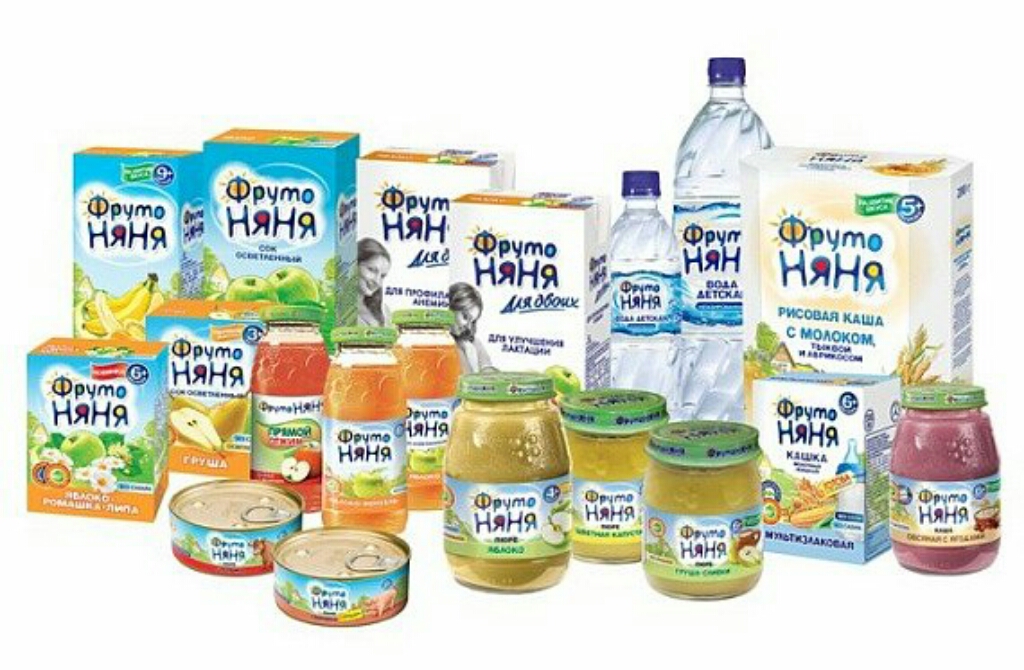What is table food for babies
The Right Way to Transition Your Kid from Baby Food to Table Food
If your baby is loving baby food and seems ready to join in on family meals, you might have some questions about how to get started. It’s tricky to know exactly when babies can eat regular food, and the transition can be a little overwhelming.
Here’s a quick guide with our best tips for transitioning older babies away from pureed food to a more complex diet. These tips will help you decide when your baby can eat table food, and how to incorporate those foods without stress.
Transitioning from baby food to table food
“Table food” generally refers to food that comes from your kitchen, rather than out of a jar or pouch. This food is more solid in texture than baby food purees. However, table food for your baby should still be soft enough to easily mash.
The easiest type of table food to introduce to your child when transitioning from baby food to table food is finger food. These foods don’t require utensils, and they are easy to eat. Finger foods also help babies practice their pincer grasp and promote self-feeding.
Some examples of finger foods to try with your baby are:
- Avocado slices
- Smashed blueberries
- Banana
- Sweet potato
- Cooked veggies like carrots, sweet potato or squash
Keep safety in mind when babies start eating regular food
To prevent choking, it’s important to take caution when it comes to the types of food you serve and how to safely cut those foods.
Serve foods that are soft, can easily be gummed, or that melt in the mouth. Avoid serving hazardous foods such as crunchy raw fruits and veggies, nuts, popcorn, raisins, and hard candy. Also be sure that foods are cut so their small enough to prevent choking.
Read a more extensive safety guide to learn more about how to prepare foods safely for your baby.
When can babies eat table food?
Most babies are ready to transition from baby food to table food by the time they are eight or nine months old.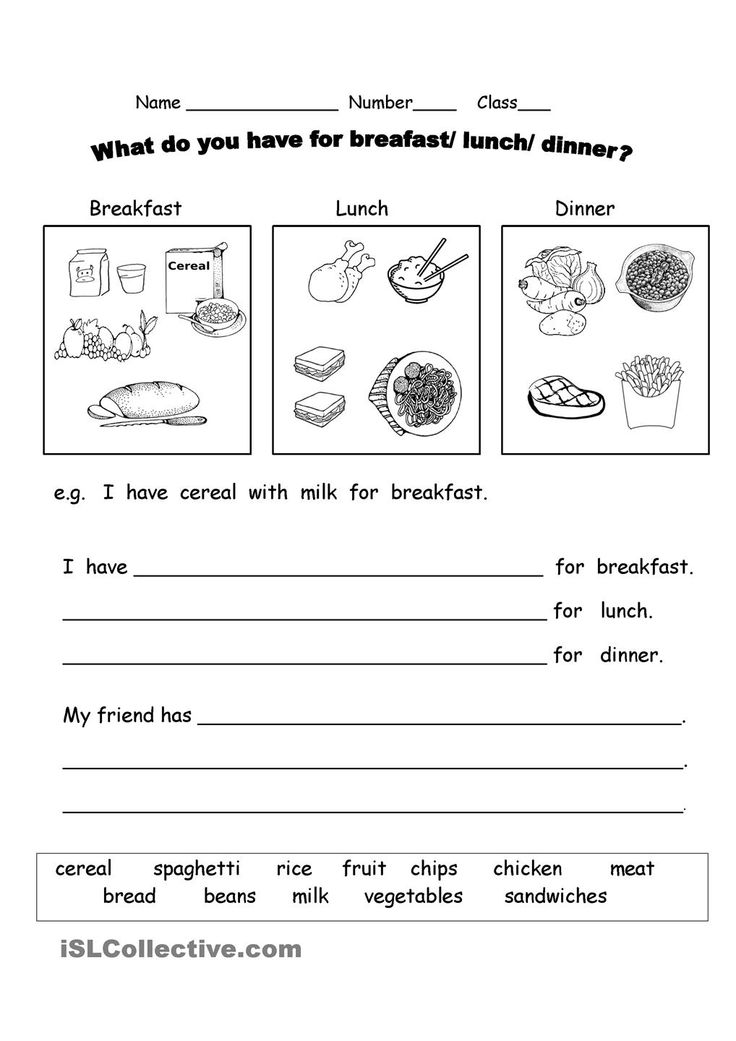 However, some babies make the change earlier or later. There really isn’t a concrete age milestone for when babies should start eating table food. Instead, there are developmental milestones that indicate when babies are ready to try table food.
However, some babies make the change earlier or later. There really isn’t a concrete age milestone for when babies should start eating table food. Instead, there are developmental milestones that indicate when babies are ready to try table food.
Signs that your baby is ready to eat table food include:
- Can sit up in high chair unassisted
- Can bring food to his or her mouth
- Shows interest in other people’s food
- Shows less interest in being spoon-fed
What about teeth?
You might be wondering how your baby can chew solid food without teeth. Don’t worry! It’s not necessary to base when babies can eat table food on whether or not they have teeth. As long as you serve food that is on the softer side, your baby can mash it with his or her gums.
Healthy habits start now!
Transitioning from baby food to table food is a great time to promote healthy eating with your child. Although this is a time for your baby to explore food, it’s important to offer a variety of healthy foods.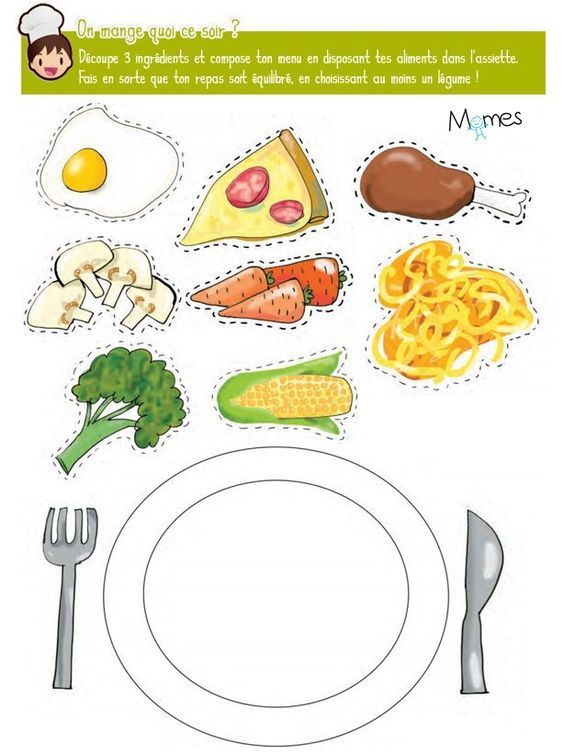 Allowing your baby to touch, taste, and even play with food (even if he or she doesn’t eat it) is one of the best picky eater tips even early on.
Allowing your baby to touch, taste, and even play with food (even if he or she doesn’t eat it) is one of the best picky eater tips even early on.
Feed a baby what is on your plate
Feeding your baby regular food doesn’t require extra time in the kitchen preparing special food. Instead, just feed your baby what you have on your plate (being sure to follow the right safety measures). Not only is this easier on you, but it allows your child to participate in family meals. In addition, it’s important for your baby to see his or her parents modeling healthy food choices (and his or her sibling eating healthy kids meals too!).
Simply modify the food on your plate for your baby at meal time. As your child grows older, you can transition the way you modify these foods into healthy preschool meals.
Above all, stay patient when you’re ready to start feeding your baby regular food
Don’t be surprised if most of your baby’s food ends up on the floor the first few (or many) times you offer finger food. Remember, many children need several exposures to a new food before they accept them. This is a time for exploration and learning!
Remember, many children need several exposures to a new food before they accept them. This is a time for exploration and learning!
Remember to have fun no matter how messy (literally) the transition from baby food to table food may be!
Looking for an easy way to feed your kids nutritious meals? Yumble will help take the stress out of meal planning, even if you have a picky eater. Simply pick the plan that works best for your family, choose your weekly meals, and Yumble will take care of the rest! No cooking required!
Mega List of Table Foods for Your Baby or Toddler
Snag this awesome list of food for 1 year olds to toddlers, and the 9, 10, and 11 month old babies in between learning to eat table and finger foods. Includes a free printable list too!
Wondering what types of food to feed give your baby or 1 year old? As a pediatric occupational therapist and mom, I’ve got your covered. You’ll find that most of the ideas I am sharing are for babies 10 months and up, but it really depends on how well your baby or toddler is chewing foods. You could be introducing these a little earlier or later.
You could be introducing these a little earlier or later.
In general, these are perfect foods for 1 year olds and those a little younger!
Wait, I’m worried about my baby or toddler choking on solid food!
If you’re worried about your baby choking make sure you check out our guide on baby gagging. Understandably, this is a common concern. Keep in mind that gagging and choking are two different things. It’s quite common for babies and toddlers to gag occasionally.
If your baby or toddler gags a lot with new foods they might be getting used to the texture. Or, they may need help learning to chew.
However, if it’s happening a lot you’ll want to talk to your doctor and for sure head to that guide. This is something I’ve seen a lot as an OT and the sooner you address it the better.
Of course, any concerns at all about your child’s eating or variety of foods should be brought up with your child’s pediatrician.
And, if you’re wondering when you should first serve the ever popular crunchy breakfast cereal, Cheerios, then head to When Can Babies Eat Cheerios.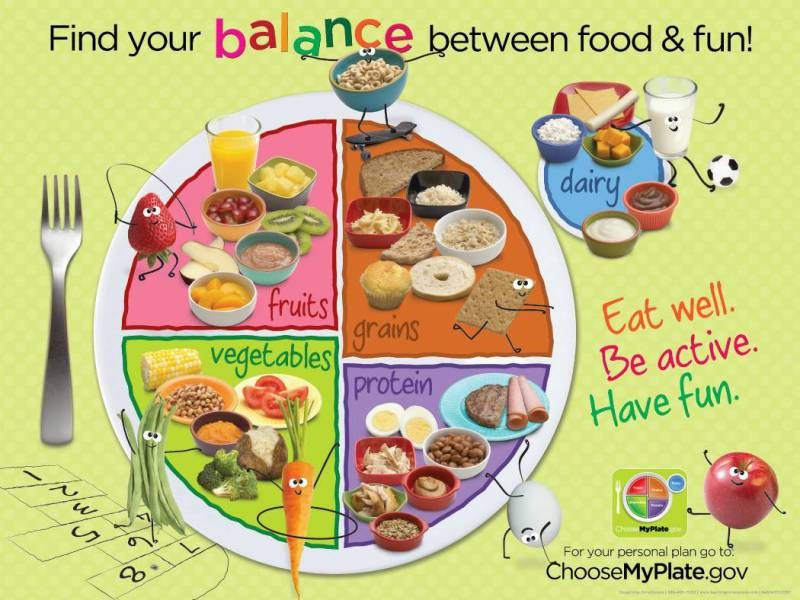
Are these Food Appropriate for My Baby or Toddler?
These guidelines are based on my experience as a licensed occupational therapist and the 17 years of experience working with hundreds of families. The suggestions are also in alignment with the American Academy of Pediatrics (AAP) recommendations.
If your baby hasn’t started eating table foods yet or is CONSISTENTLY REFUSING THEM and they’re 9 months old or older then please go to this article first for a step by step guide: how to transition to table foods.
To be honest, I wanted to have a resource for myself, since Isaac (10 months old) is right in the middle of this transition and I am struggling to make sure he has enough variety.
I do have to admit that Isaac isn’t (hmm, need to choose my words carefully here,) the best eater.
He chews and manages food very well, but unless the texture isn’t right, he isn’t very interested. Of course, this is very frustrating! To make sure I optimize my chances at success (aka: he actually eats something other than Gerber Puffs or Cheerios), I need a go to a list with all of my ideas (plus some new ones), so I am not scrambling in the craziness of meal prep.
If you’re in the same boat, check out our free workshop to help your toddler learn to eat a wider variety of foods.
The list is organized into three categories:
- fruits/vegetables
- carbs
- proteins
When putting together meals, plan for at least one food in each of these three groups. Also, keep in mind that if you mash up a casserole or lasagna, all three categories may be covered in one shot. For example, with the lasagna: spaghetti sauce= protein, noodles= carbs, and meat or cheese= protein.
Let’s get started…
Affiliate links used below. See our full disclosure.
Tips for Feeding Table Foods to Babies
- Make sure everything you give your baby for the first time is closely monitored. Chew a small piece in your mouth first and pay attention to how hard it is to chew. If it doesn’t break down easily and quickly, it probably isn’t a good choice.
- Stay calm if your baby coughs or chokes a little, it will happen.
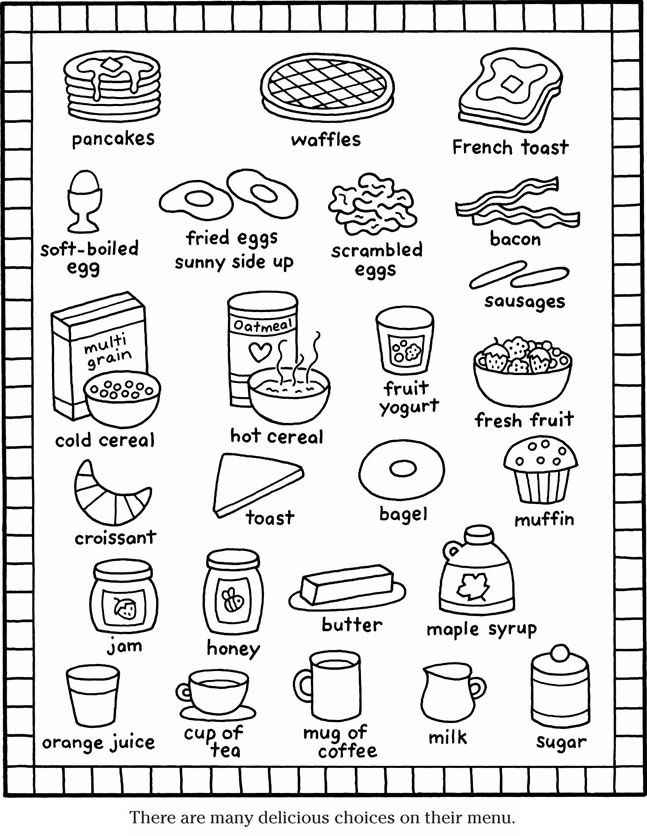 If you freak out, they will freak out. If they are coughing or choking on a food frequently, stop giving it to them and re-introduce at a later date.
If you freak out, they will freak out. If they are coughing or choking on a food frequently, stop giving it to them and re-introduce at a later date.
- Cut food into small pieces so they can chew it easily. Cut beans in half and make sure meats are soft and moist. Help your baby with foods that are difficult to pick up, don’t make the pieces bigger until you are sure they can manage them.
- This is a list of table foods, not necessarily finger foods, although many of them are. For example, spread hummus on crackers or serve cottage cheese.
- Have your baby or toddler eat with the rest of the family. It’s the best way for them to see other’s eating a variety of healthy meals and food groups. They learn so much from watching YOU eat!
- If your baby is under 1 they’ll still be drinking formula or breast milk. You can serve some during the meal in an open cup, straw, or sippy cup. Children at this age typically don’t need fruit juice, but water is a great option.
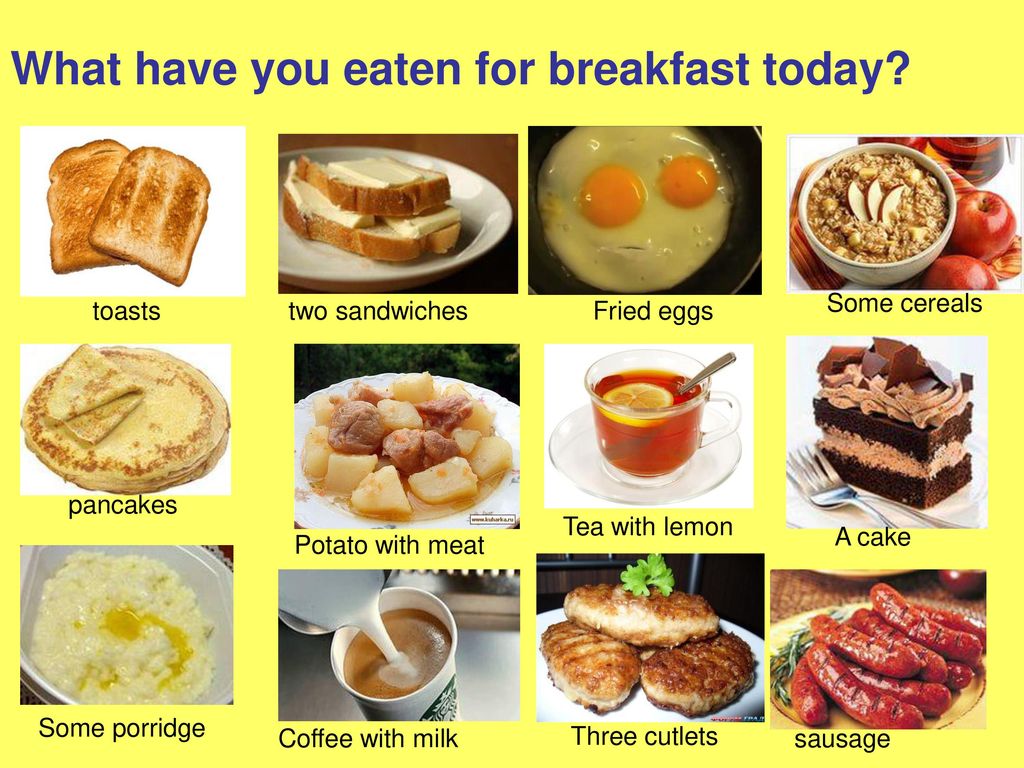 Once a child has their first birthday they can be transitioned to cow’s milk.
Once a child has their first birthday they can be transitioned to cow’s milk.
- At every meal offer a fruit or vegetable, carb, and protein for a balanced meal. Snacks don’t have to include a protein. Baby food is optional, but by this age focus on moving them towards all table food at a meal.
- Cutting foods into small pieces can be a pain, but offer small pieces that are easy to pick up and small amounts so they aren’t overwhelmed. This also helps prevent choking hazards of overstuffing and too large pieces that they can’t manage. You can also cut food into stick shapes if your child is able to manage that well.
- This suction mat is also my favorite if your using a chair that pulls right up to the table or if your going to a restaurant. Check out the little pocket to catch the food, brilliant. I used this with all three of my kids, and it’s held up amazingly! Seven years of use, not too shabby.
- If you use a high chair, these suction bowls are awesome for trays!
Before we move on, if your baby is 9-10 months old and struggling to eat table foods, be proactive. They can learn to eat with some specific strategies.
They can learn to eat with some specific strategies.
Check out the free workshop that will help you get your baby or toddler on the right track: 5 Big Feeding Mistakes That Are Stopping Your Child From Learning to Eat Table Foods Workshop. Includes a free workbook:)
Food Ideas for 10 -11 month and 1 Year Olds
Protein Ideas
Tofu
Meatballs (gluten and dairy free optional with this link)
Meatloaf
Cheese shredded from a hand grater (it is thicker and easier to grab this way)
Tilapia
Salmon
Chicken (make sure it is softer texture)
Homemade mini chicken nuggets (gluten and dairy free option)
Turkey (ground or breast/cutlet)
Hard-boiled Egg
Scrambled Egg
Hummus
Black Beans
Cheese Spreads
Cottage Cheese
Ricotta Cheese
Crumbled Goat Cheese (or use as a spread)
Plain Pulled Pork (make sure it is extra soft)
Shreds of Pot Roast (make sure it is extra soft)
Yogurt
Tzatziki Sauce (may need to puree if there are large pieces of cucumber in it)
Peanut Butter (now safe to give to babies and toddlers, spread thin or thin out with water)
Olive oil (great healthy fat, drizzle on top of carbs or veggies)
Toast
Plain or Buttered Bread
English Muffin
Bagel
Cheerios
Barley
Corn Grits/Polenta
Brown Rice
Short Pasta
Graham Crackers
Town House Crackers
Pancakes
Crepes
Waffles
French toast
Tortilla
Pita
Oatmeal
Quinoa
Cream Of Wheat
Fruit and Vegetable Breads (i. e. zucchini, banana, etc.)
e. zucchini, banana, etc.)
Muffins
Corn Bread
Fresh Fruit/Vegetable Ideas for Baby and 1 Year Old
Peaches
Watermelon
Plum
Mango
Banana
Avocado
Potato
Sweet Potato
Applesauce
Pears
Peas
Cooked Diced Apples
Cooked Diced Carrots (great to use pieces from soups)
Cooked Diced Celery
Pureed Soups (i.e. tomato, butternut squash)
Inside of Baked Potato
Mashed Potato
Mashed Sweet Potato
Broccoli (make sure this is extra soft)
Cauliflower (make sure this is extra soft)
Puree Fruits and use as a spread
Butternut Squash
Zucchini
Strawberries
Blackberries
Blueberries
Raspberries (many babies will find these too tart, but still give it a try)
Spinach (use in casseroles or foods you are mashing up)
*If your baby is struggling with the taste or texture of fresh fruits you can also try freeze dried varieties. They’re also great as quick health snack while you’re traveling.
They’re also great as quick health snack while you’re traveling.
Baby Meal Plans
Below, I am outlining some various meal plans, just to give you some ideas. Many of the meals would suit a toddler or big kid as well. Again, depending on how your child is managing foods, you may need to dice or mash foods more. I would encourage you to think of what you are eating and if you could modify it for your baby. Ideally, you want your baby (soon to be toddler) to be eating what you are eating.
This may mean some planning ahead.
Mash up or chop what you are eating into small pieces. Once you get into this frame of mind, you will be surprised to think of all the foods your baby can enjoy, too!
Also, I try to vary textures at each meal. Meaning, I want one kind of food that needs to be eaten from a spoon and at least one that is finger-fed. It doesn’t always work out this way, but that’s the goal, especially as they are transitioning off of all pureed foods.
Breakfast Ideas for 10 -11 Month and 1 Year Olds
- English muffin with cream cheese and chopped strawberries
- Cottage cheese (depending on age, may need to chop coarsely in food processor), diced pear, and graham crackers
- Diced hard-boiled egg, diced toast with butter, and applesauce
- Cream Of Wheat with pureed berries and plain whole milk yogurt (yes, mix this all together)
- Pumpkin waffles and diced banana
Check out toddler breakfast ideas for more inspiration.
Lunch Ideas for 10-11 month and 1 year Olds
- Tortilla folded in half (quesadilla style) with a little melted cheese inside and mashed avocado
- No sugar added applesauce, zucchini bread, and shredded mozzarella pieces
- Tomato soup with black beans and blueberry cornbread
- Hummus spread on pita with diced fruit salad (or whatever fruit you have on hand)
- Shreds of pot roast in tzatziki sauce and pureed mango-banana sauce (blend pieces of mango and banana together, leaving it a little chunky)
Head over to toddler lunches for 17 more easy and healthy ideas perfect for 1 and 2 year olds!
Dinner Ideas for 10-11 Month and 1 Year Olds
- Ricotta or cottage cheese, spaghetti sauce, spinach, and whole wheat noodles chopped coarsely through a blender or food processor.
 Also, give some pieces of noodles to finger feed
Also, give some pieces of noodles to finger feed - Tilapia, steamed and slightly overcooked broccoli, and polenta
- Meatballs, barley, and diced carrots
- Mashed sweet potatoes, tender turkey breast or cutlet, and pieces of buttered bread
- Canned salmon (I always use wild Alaskan), quinoa, and diced apples/butternut squash
Find even more food ideas for babies and toddlers in Ultimate List of Baby/Toddler Meal Ideas and if you’re looking specifically for high calorie foods, click on over to High Calorie Foods for Baby and Toddlers.
Want a Free Printable Food List for 10-11 Month and 1 Year Old’s?
Yup, you heard me right, get a printable of tons of finger food ideas for babies, it’s something I’ve written about a lot here on Your Kid’s Table. You can print this out and hang it right on your fridge. I’ll send it right to your inbox!
Grab your free toddler/baby table foods printable here.
More for Babies and ToddlersHow to Transition Your Baby to Table Foods
How to Wean from the Bottle
Toddler Portion Sizes: How Much to Serve
How to Teach Your Baby or Toddler to Feed Themself
**Did you Pin this? Click here to save!**
Alisha Grogan is a licensed occupational therapist and founder of Your Kid’s Table.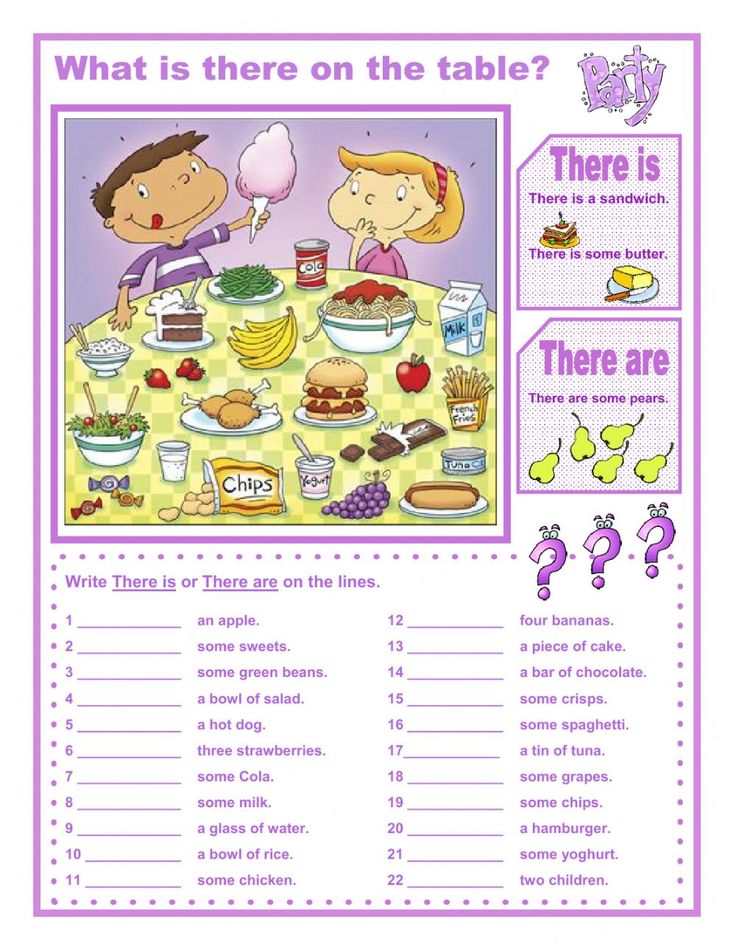 She has over 17 years experience with expertise in sensory processing and feeding development in babies, toddlers, and children. Alisha also has 3 boys of her own at home. Learn more about her here.
She has over 17 years experience with expertise in sensory processing and feeding development in babies, toddlers, and children. Alisha also has 3 boys of her own at home. Learn more about her here.
Lunch breakthrough: what and how they feed in school canteens | Articles
The breakthrough in school meals, which has been talked about for so long at all levels, has finally happened. Not only nutritionists, but also the children themselves took part in the development of a fundamentally new canteen menu. Expectations were justified - even spoiled young Muscovites almost completely eat their portions. What are the advantages of the new diet, is it necessary to be afraid of the nuggets that ended up on the menu, what is the danger of the school buffet and what needs to be brought to perfection - in the Izvestia material. nine0003
On the guard of palatability
Rospotrebnadzor believes that when a high level of safety and quality of school food is achieved, it is time to pay attention to the taste preferences of students. Of course, taking into account the principles of a healthy diet. According to information provided by the department to Izvestiya, methodological recommendations have been developed “Parental control over the organization of hot meals for children in educational institutions”, allowing mothers and fathers to evaluate the quality of catering services provided. Thanks to this, the number of complaints received about state-owned food has recently decreased by a factor of three. nine0008
Of course, taking into account the principles of a healthy diet. According to information provided by the department to Izvestiya, methodological recommendations have been developed “Parental control over the organization of hot meals for children in educational institutions”, allowing mothers and fathers to evaluate the quality of catering services provided. Thanks to this, the number of complaints received about state-owned food has recently decreased by a factor of three. nine0008
lunch break
Photo: TASS/Artem Geodakyan
“The Novosibirsk Research Institute of Hygiene of Rospotrebnadzor developed and launched a digital service for the formation of the school menu. Today, about 5 thousand organizations in 49 regions of the Russian Federation work in the online service. Note that the daily menu is published on the websites of schools. In some cases, it is also available in electronic journals,” the ministry said.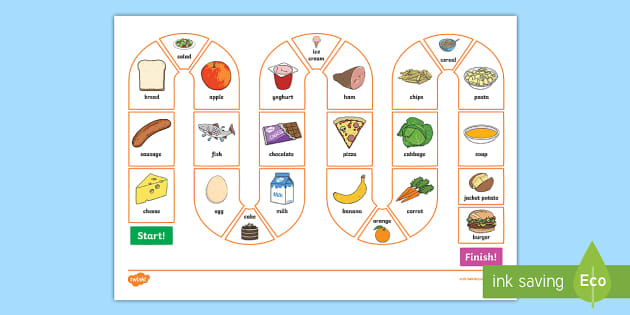
Rospotrebnadzor monitors compliance with food preparation sanitary standards — every year the department reviews and corrects more than 35,000 school menus. On the alert, including specialists from the inspectorate for the quality of agricultural products, raw materials and food, as well as the nutrition commission under the governing councils of schools - it includes teachers, schoolchildren and parents. nine0008
Educational institutions in the capital are at the forefront of revamped school meals. As Izvestia was told in the press service of the Department of Education and Science of the city of Moscow, in order to improve the diet, schools conducted a survey on what kind of food the children would like to see in the canteen.
“Based on the monitoring of taste preferences, a new menu was compiled to take into account all the wishes of children and parents. It was jointly developed by the Educational and Healthcare Catering Association and the city's parent community advisory council, with the participation of leading children's nutritionists.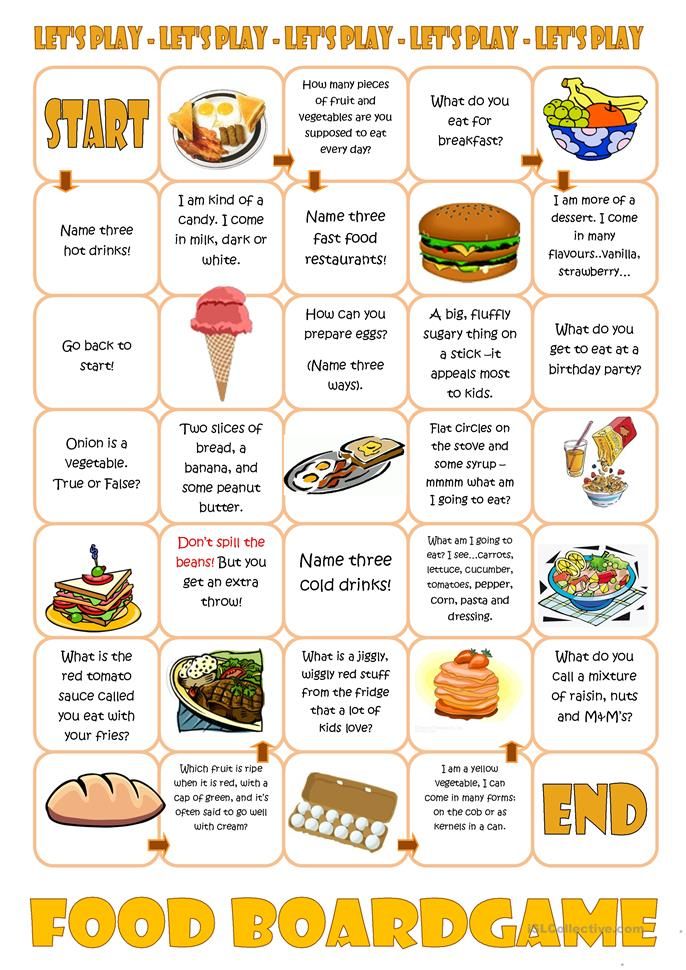 The menu takes into account the recommendations of specialists from specialized research institutes of baby food”, - explained in the educational department.
The menu takes into account the recommendations of specialists from specialized research institutes of baby food”, - explained in the educational department.
Several schools tested the new menu format as a pilot during the last school year, according to the department. “Both children and parents were satisfied: schoolchildren began to eat more, the amount of food left on the plates significantly decreased. Therefore, from September 1, 2022, a new menu has appeared in all schools in the city,” the department stressed.
In the important matter of school meals, the term "eatenability" comes into play. This indicator indicates whether children's food is in demand or students ignore it. According to the Department of Education and Science of the City of Moscow, schools monitor eating habits on a daily basis. Compared to the previous academic year, this indicator has increased by 1.5-2 times. And in about a third of metropolitan schools, students eat everything they are offered for breakfast and lunch. nine0008
nine0008
lunch break
Photo: RIA Novosti/Igor Zarembo
Department officials note that the diet in Moscow schools is balanced and has an optimal ratio of proteins, fats and carbohydrates, and also meets the requirements of SanPiN. “It contains those products that are most useful for a growing organism. These are meat products - a source of animal protein, and vegetables with fruits, which provide the necessary amount of vitamins and minerals. Also, when compiling the menu, the calorie content of dishes is taken into account: school meals should cover children's energy needs, ”the department noted. nine0003
According to Rospotrebnadzor specialists, the menu does not include dishes and products prohibited for catering in children's groups.
On the way to excellence
Izvestia evaluated school breakfasts and lunches with Ekaterina Pyrieva, Candidate of Medical Sciences, pediatrician, head of the laboratory of age-related nutrition of the Federal State Budgetary Institution "Federal Research Center for Nutrition and Biotechnology". According to the expert, the diet of little Muscovites is very diverse - the children will definitely not go hungry. However, there are still some shortcomings in the menu. nine0003
According to the expert, the diet of little Muscovites is very diverse - the children will definitely not go hungry. However, there are still some shortcomings in the menu. nine0003
— Let's take a breakfast option, when children are offered, in particular, meatballs and buckwheat with tomato sauce. In principle, this does not go against the recommendations for nutrition. The question is whether it is worth giving breakfast dishes that are close in structure to the second dinner course. However, many parents do not see this as a contradiction, because before going to school their children eat a small breakfast. The home early meal menu often includes only one item - yogurt, egg, cereal, cottage cheese , says the doctor.
lunch break
Photo: TASS/Sergey Fadeichev
But in this case, according to the expert, the school breakfast complements home meals. But the specialist recommends that production technologists often seek advice from nutritionists.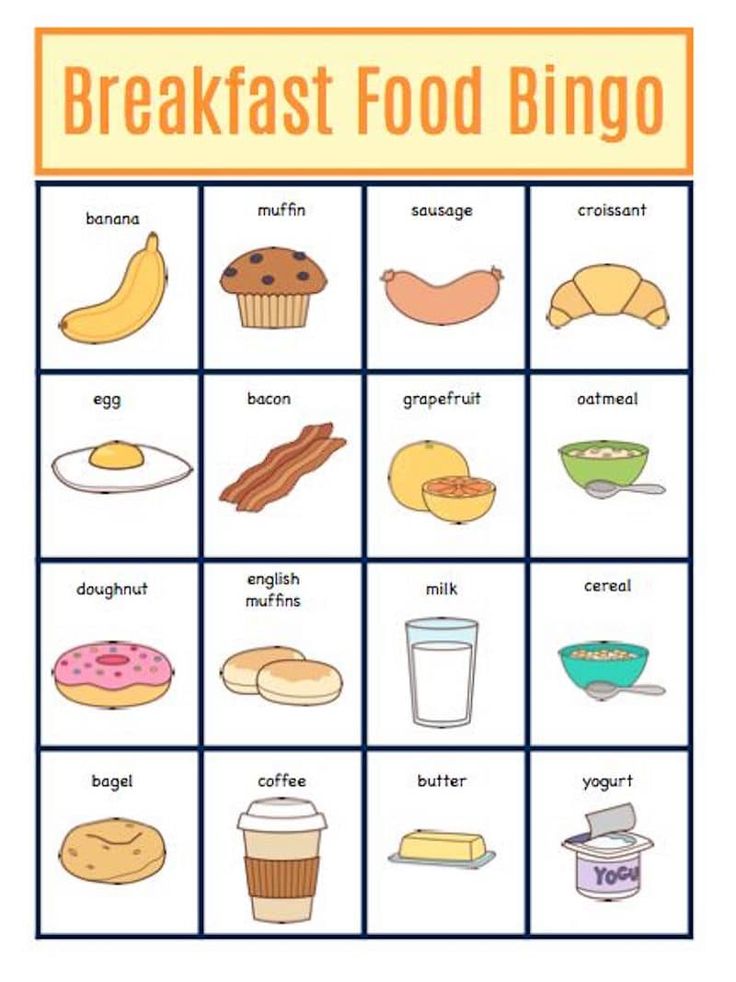 For example, one breakfast menu included sweet cereals with milk and an assortment of confectionery. These are foods that are very rich in carbohydrates. It is better not to combine them in one meal. nine0008
For example, one breakfast menu included sweet cereals with milk and an assortment of confectionery. These are foods that are very rich in carbohydrates. It is better not to combine them in one meal. nine0008
According to the standards, a bread basket is always present on the student's table. But, according to the expert, if there is bread on the menu, then there should be products that go with it, for example, the same cheese. A student is unlikely to eat muesli with milk, cottage cheese or cheesecakes with bread.
School lunches in general did not cause serious complaints from the nutritionist. Ekaterina Pyreva noted that the menu has become so diverse that it is interesting even just to read it. According to the Moscow Department of Education and Science, now schoolchildren are offered 11 options for the first hot dishes: Far Eastern soup with red fish, Kuban soup, Novgorod cabbage soup, Moscow borscht, solyanka, vegetable puree soup, minestrone. In the arsenal of school canteens 9types of main meat dishes and 5 types of side dishes that are in high demand among children: beef in Mexican style, azu in Tatar style. At the same time, all dishes are prepared according to special recipes as part of the recommendations of baby nutrition specialists.
In the arsenal of school canteens 9types of main meat dishes and 5 types of side dishes that are in high demand among children: beef in Mexican style, azu in Tatar style. At the same time, all dishes are prepared according to special recipes as part of the recommendations of baby nutrition specialists.
According to the expert, the main thing to pay attention to is the compatibility of dishes.
— For example, you should not combine borscht with beetroot salad on the menu. It seems logical to include vegetables in the snack and the first course. However, vegetables should not be repeated. And if potato soup is served for the first course, then the potato dish should not become a side dish or be offered in the form of potato salad. On such a day, for the second course, you can cook vegetable stew or hodgepodge as a side dish , - suggests Ekaterina Pyrieva.
lunch break
Photo: TASS/Sergey Fadeichev
The expert also advises against serving carrots as a salad for two or three days in a row. It is better to alternate it with cucumbers and tomatoes, cabbage or beets (if these products are not in the first course).
It is better to alternate it with cucumbers and tomatoes, cabbage or beets (if these products are not in the first course).
In the capital's schools for lunch, children can choose the first course from two offered - soup or broth. “Given that not all children like soups, they always have the opportunity to replace it with chicken broth with herbs and croutons. This increases the likelihood that the child will still eat the first meal. Previously, only one version of the soup was offered. For the first course, children can take as much bread as they need” , - noted in the department. In this case, Ekaterina Pyreva believes that the dish that is offered as a replacement should be of adequate nutritional value - you should choose between the types of soup. And something substantial should have been served with the broth - an egg or a meat pie.
If there is an alternative
Nevertheless, according to parents, the choice is one of the main advantages of the new menu. For example, before the sauce was added to the garnish without regard to preferences, even if the child did not ask for it, but now it is possible to refuse it. And instead of a ready-made salad, a student can assemble his own from the ingredients he likes - vegetable cuts from fresh and boiled vegetables. Children can even salt their food to taste, something that was never possible before. nine0008
For example, before the sauce was added to the garnish without regard to preferences, even if the child did not ask for it, but now it is possible to refuse it. And instead of a ready-made salad, a student can assemble his own from the ingredients he likes - vegetable cuts from fresh and boiled vegetables. Children can even salt their food to taste, something that was never possible before. nine0008
Ekaterina Pyrieva also considers the rejection of traditional tea with added sugar to be a significant achievement in catering. Finally, kids can sweeten the drink at will.
lunch break
Photo: TASS/Sergey Fadeichev
- The fact that sugar is now offered in portions can only be welcomed. Some children are used to a certain sweetness in drinks, while others do not add sugar at all - this approach caters for all preferences , - explains Ekaterina Pyrieva.
Healthy lifestyle advocates are concerned about dishes such as nuggets, pizza, fishballs, which in some regions are included in the school menu. However, Rospotrebnadzor and the Moscow Department of Education and Science assured that this food has nothing to do with traditional fast food. The technology of cooking school meals is fundamentally different from that used in fast food restaurants. From fast food there are only fashionable, trendy names. nine0003
“At the request of the children themselves, new dishes appeared in the school menu that children and teenagers really love: fishballs, meatballs, croissants, muffins, frittata with cheese and ham, pizza, pancakes, nuggets. All of them are prepared with the maximum preservation of nutrients and vitamins, the necessary combination of fats, proteins and carbohydrates” , the department explained.
According to Rospotrebnadzor, a key requirement for school meals is gentle cooking methods (stewing, steaming, poaching, boiling, baking in an oven or combi steamer). Therefore, in the manufacture of school nuggets and fishballs, technological methods are excluded, which are objected to by nutritionists in baby food. And pizza is baked without sauces and smoked meats, the use of which is not allowed in the school menu. nine0008
Ekaterina Pyreva also notes that the modern menu is aimed at making children willingly eat what they are offered. According to the expert, it would be strange to rely only on the usual cabbage soup and porridge, although you should not forget about them, since it is necessary to carefully preserve national traditions in nutrition. But the presence on the menu, for example, pizza, whatever it may be, Pyreva still considers it inappropriate - this dish is not for regular use.
— Children eat what they are used to at home. If adults adhere to the principles of healthy eating, then the child will choose healthy food. Most schoolchildren still enjoy muffins and pizza, but meatballs and fish dishes cause them less enthusiasm. I think that you should not follow the crowd, but you need to develop an interest in healthy food , — the expert comments.
lunch break
Photo: TASS/Artem Geodakyan
Ekaterina Pyreva once again emphasizes that, in general, the menu compilers tried to comply with the requirements for school meals, but there are still opportunities for improvement.
- If we take the standards of some European countries, then it is stipulated that the student's menu cannot contain sweet drinks, milk with sweet flavors and even yogurts with fruit fillings. This is done in order to reduce children's commitment to sweet taste, reduce the amount of added sugars in the diet, which are in abundance in the menu of a modern schoolchild , the pediatrician warns.
By the way, according to statistics, in general, the number of diseases associated with nutritional factors among schoolchildren has slightly decreased. This is the case for anemia, for example. However, on one point, the situation is steadily deteriorating - the number of overweight and obese children is growing, the expert notes.
Sweet life
If you look at school buffets, they even have a fresh line, represented by fruit and vegetable cuts and assorted. Juices, nectars and fruit drinks, various breads, fruit, cereal bars and milkshakes are sold, as well as food with a reduced sugar content, without gluten or lactose. nine0003
However, the doctors complain that the students are more likely to choose baked goods from the pastry shop, sweet biscuits and chocolate products, the names of which are still dazzling. The school buffet, according to Ekaterina Pyrieva, should contribute to the organization of an additional meal, and not resemble a theatrical one.
- Sweets should not be an additional meal. There is no place for butter cookies, pastries, sweet drinks, cakes in the school buffet menu, - the expert comments. The child must be taught to understand that sweets complete the meal and follow the main course. Cakes are not an element of daily nutrition, but a treat for the holidays , says the pediatrician.
lunch break
Photo: TASS/Sergey Fadeichev
Fortunately, adults have the ability to put a ban on the purchase of a particular product. “Thanks to the Moskvenok service, parents can control their child's meals in the canteen and expenses in the canteen, as well as set a daily spending limit and a stop list for foods that are undesirable for the child in the canteen. Access to information about nutrition at school is implemented in the MES Diary mobile application, the Moscow Department of Education and Science explained. nine0003
But, according to Ekaterina Pyrieva, control over nutrition should be carried out through the mind of the child, and not by acting with the help of banal prohibitions. Moreover, seeing an assortment of sweets and not being able to buy something is a kind of test for children.
- I would remove pizza, Ptichye Moloko and Potato confectionery, chocolate muffins, boiled condensed milk tubes, marshmallows and other similar things from the buffet. I would leave natural juice, non-bread cookies, muesli-type bars, fruit and vegetable chips, fresh fruit, cereal buns. Drinkable yogurt and cereal bun - a great snack , - says Ekaterina Pyrieva.
I would leave natural juice, non-bread cookies, muesli-type bars, fruit and vegetable chips, fresh fruit, cereal buns. Drinkable yogurt and cereal bun - a great snack , - says Ekaterina Pyrieva.
Gastroenterologist, hepatologist, Candidate of Medical Sciences Sergey Vyalov agrees with his colleague. In his opinion, in the life of modern schoolchildren there are a lot of sweets and little movement. Calories are accumulated, but not spent, because after school and homework, children do not run around in the yard, but are busy playing computer games.
- People who are now over 40 years old remember that in their childhood there were at most two fat girls in the class. In modern children, more than half of classmates are overweight, and a quarter are already obese. The disadvantages of the school buffet menu are obvious - high calorie content and low glycemic index of many products , Dr. Vyalov comments.
According to the expert, 's high calorie content comes from a "cocktail" of fat and sugar. So, the energy value of some items from the buffet menu reaches 500–600 kcal / 100 g. A low glycemic index means that the resulting carbohydrates will be quickly absorbed, there will be a sharp release of insulin - this hormone is responsible for the deposition of fat on the body.
So, the energy value of some items from the buffet menu reaches 500–600 kcal / 100 g. A low glycemic index means that the resulting carbohydrates will be quickly absorbed, there will be a sharp release of insulin - this hormone is responsible for the deposition of fat on the body.
lunch break
Photo: TASS/Sergey Savostyanov
- Generally, the sweeter the product, the lower its glycemic index. Complex carbohydrates that need to be digested are absorbed slowly, so they do not lead to a strong release of insulin, the expert explains.
Rospotrebnadzor also emphasizes that additional (buffet) nutrition should not become a risk factor for the formation of pathological eating habits and metabolic disorders, overweight and obesity. In the capital's Department of Education and Science, we were encouraged that all the products in school buffets contain only natural ingredients and only complement the breakfast and lunch menus.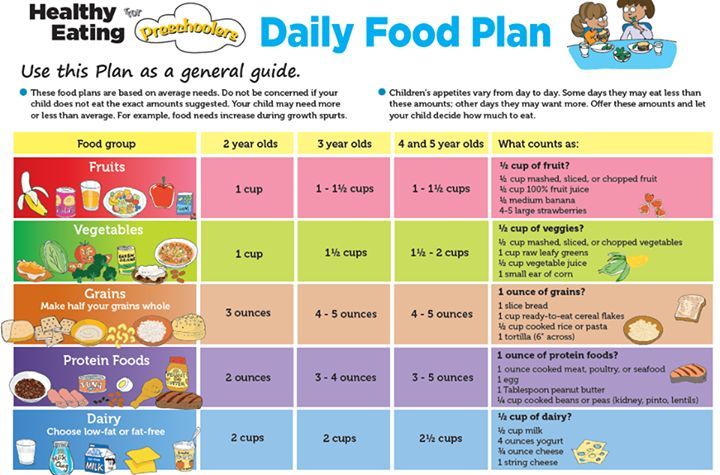 nine0008
nine0008
“The work of buffets is organized in such a way that children, especially those from lower grades, purchase buffet products after the main hot meals,” the agency explained.
how to find out what a child eats in the canteen / City news / Moscow website
Education Yevgeny Samarin
Today, Moscow school canteens offer two menus for organizing reduced-price meals, as well as alternative dishes in buffets. How parents can understand this multitude of positions, make sure that their child eats more than just sandwiches, and control the quality of food, read in mos.ru. nine0002 A varied diet is necessary for the normal development of the child. Therefore, in Moscow schools there is a choice of two types of menus. As before, at the request of parents, the least healthy foods - semi-finished products and canned meat - are not served in canteens, but fresh vegetables and fruits are included in the diet every day. In addition, you can buy various delicacies, pastries and healthy snacks in the buffets.
Modern technologies on guard of healthy eating
Parents of Moscow schoolchildren can find out how often a child snacks and help him eat right online using the information system "Passage and Nutrition". It aggregates data on non-cash payments using cards, bracelets and other Moskvenok identifiers, allows you to replenish the balance and set a spending limit. Also, parents can put a ban on the purchase of various types of products in canteens. Salted breadsticks and mini-pretzels are the most commonly banned. nine0003
More than 90 percent of Moscow schools are connected to the Pass and Meal system, and 935 thousand students have cards, bracelets and other devices.
The Pass and Feed project has been operating in the schools of the capital since 2012 and allows you to track when a child comes to school and leaves it. To connect to the system, one of the parents or the legal representative of the student needs to fill out an application and give it to the class teacher. After connecting to the system, you will be able to get all the necessary information on the Visits and Meals page of the mos.ru portal, using the Moscow State Services mobile application and push notifications, as well as by e-mail. In addition, on the "Visit and Dining" page of the mos.ru portal, you can track hot meals and purchases at the buffet. nine0003
After connecting to the system, you will be able to get all the necessary information on the Visits and Meals page of the mos.ru portal, using the Moscow State Services mobile application and push notifications, as well as by e-mail. In addition, on the "Visit and Dining" page of the mos.ru portal, you can track hot meals and purchases at the buffet. nine0003
For information on how to find out about your child's school attendance and meals, as well as how to grant access to the project to other family members, read the instructions from mos.ru.
Compliance with norms
They prepare food for young Muscovites, mainly directly in the catering departments of schools. For establishments with buffets-handouts, where there is no catering department, meals are prepared at food processing plants and delivered in special isothermal containers that maintain the temperature of the dishes. The quality of products is controlled by technical regulations and sanitary rules (SanPiN 2. 4.5.2409-08). Regulatory documents oblige manufacturers to ensure the safety of products, monitor their composition and nutritional value, as well as store and transport ready-made meals and raw materials in a way that does not affect their quality. Sanitary rules and regulations apply directly to the organization of school meals. SanPiN contain not only requirements for the premises and technical equipment of canteens, but also requirements for the development of menus.
4.5.2409-08). Regulatory documents oblige manufacturers to ensure the safety of products, monitor their composition and nutritional value, as well as store and transport ready-made meals and raw materials in a way that does not affect their quality. Sanitary rules and regulations apply directly to the organization of school meals. SanPiN contain not only requirements for the premises and technical equipment of canteens, but also requirements for the development of menus.
There are several levels of control over school meals. Compliance with sanitary rules and regulations is monitored by Rospotrebnadzor, which has the right to issue orders to eliminate shortcomings and fine violators. The director of the educational organization is responsible for the quality of dishes and the organization of their sale. nine0003
In addition, schools have specialized nutrition commissions under the governing boards, which include parents. Usually information about these tips can be found on the school website.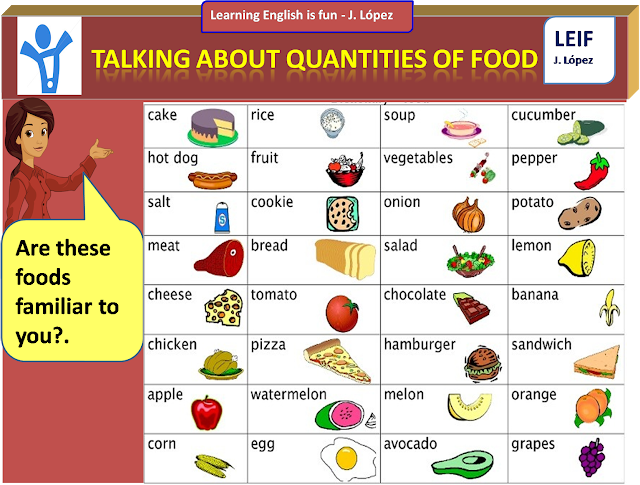
Members of the commission can check the quality of products, the size of portions, as well as the compliance of prepared dishes with technological maps.
In addition, there is a commission for monitoring the organization and quality of meals under the City Advisory Council of the Parents' Community under the Department of Education. nine0003
Cartoon characters and Viennese waffles
Some educational organizations are involved in the My School Restaurant project. Today canteens and canteens of more than 50 metropolitan schools have turned into restaurants. Their interiors are decorated with images of popular cartoon characters, seascapes, as well as paintings with the sights of Moscow, other Russian cities and capitals of the world.
Along with the usual meals from the school menu, the school restaurants serve themed meals. For example, Brazilian and minestrone soups, baked chicken skewers, fajitas, Caesar salad with dressing, Amigos salad with homemade cheese chips, lemon and orange mojitos and many other dishes.